Understanding privacy
The Privacy Act
The Privacy Act protects ‘information privacy’ — that is, people’s personal information. Information privacy gives individuals the right to exercise control over their personal information. This can include exercising control over when, how, and to what extent personal information is used and disclosed.
The Privacy Act is about transparency and accountability, so that people know:
- what personal information is being collected about them and why
- how it will be used
- how it will be kept secure and safe.
The Privacy Act also provides individuals with the right to access and correct that information.
The Privacy Act applies to the personal information handled by most Australian Government agencies, as well as many private sector organisations.

